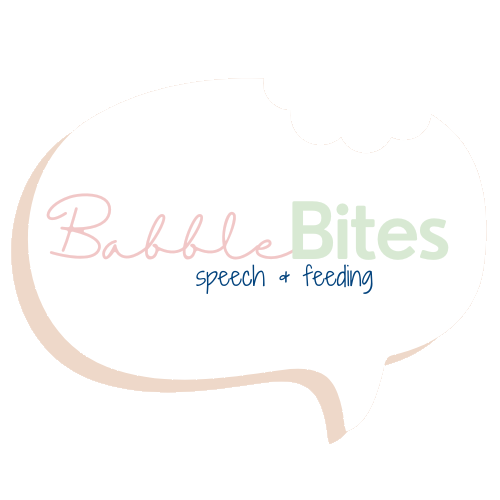Early Speech Development: What Speech Sounds Do Babies Usually Make First?
What sounds do babies start making first?
Cooing and babbling are your baby’s way of practicing making sounds in preparation to one day say words and start talking. Babies start cooing as early as 6-8 weeks old, and are your baby’s first sounds besides crying. Cooing consists of vowel sounds (e.g. ahh, ooo), and gurgling-type sounds. Babbling can start as early as 4 months, and can be distinguished from cooing, as you will start to hear your baby making consonant sounds, first as single syllables (e.g. ba, da), followed by repetitions of the same syllable (e.g. mamama, bababa). As your baby’s babbling advances, they will start to produce variegated babbling and jargon, starting around 8-10 months, where they will mix different consonant and vowel sounds together (e.g. mabodu).
Your baby may start to sound like they’re having whole conversations, they’re just not saying real words yet! This is great for their speech and language development,
as your baby is learning how to put different sounds together, use varying intonation in their voice, and vocalize back and forth to learn turn-taking in conversations! By 12 months of age, babies typically start to say their first words and word approximations, and continue to use “jargon.”
Early sounds include vowel sounds (e.g. oo, ahh, eee), bilabials (m, p, b), alveolars (t, d, n), and h, w, and y.
What consonant sounds do babies typically make first?
All speech sounds are developed at different ages. While it’s possible for some children to say words “correctly” right off the bat, it is typical for many children not to develop some sounds until later. The first sounds babies develop, other than vowel sounds (e.g. ah, ee, oh), are bilabials (sounds produced by pushing both lips together) including /m/, /p/, and /b/, followed by alveolars (sounds produced by touching the tip of your tongue to your alveolar ridge, or the “bump” behind your top front teeth) /t/, /d/, and /n/. Other early sounds include /h/, and semi-vowels /w/, and “yuh.” Due to this, babies’ first words are typically always words that are produced with these sounds (e.g. mama, dada, papa, baba, ball, nana, no, hi). Your baby’s first words will also often be comprised of word approximations, or words that are simplified, to make it easier for your baby to say, since they have not yet developed the ability to say all sounds (which is completely developmentally appropriate!). By focusing on words that have sounds that are developmentally appropriate for your baby to say, you are setting your baby up for success for imitation and increasing the words they will try to imitate and say, increasing their communication skills!
Talking to or making sounds with baby face to face is a great way to encourage early speech sound development.
What are some strategies to encourage early developing sounds?
Talking to your baby is an important part of speech and language development. Using parentese, a sing-songy and higher pitched tone of voice, can help your baby tune into the words and sounds you are saying, and has been proven to help advance early language development. Imitating your baby’s sounds can also encourage them to keep vocalizing, learn the concept of imitation (if you imitate them, they will learn to imitate you), and learn early “conversational” turn-taking. Sitting in front of a mirror together and having your baby watch how your mouth and their mouth moves to make each sound is another fun way to encourage these sounds. This can be done with sound play, such as repeating sounds (e.g. “babababa,” “mamamama”) and seeing if your baby can imitate you.
You can use language strategies, such as embedding these words with early developing sounds into verbal routines and narration, holding objects up near your mouth so your baby can see how your mouth moves to make the sounds/word, and frequent repetition to help your baby learn these words. Eventually, you can use these words with language strategies such as giving verbal choices and gentle withholding to provide your baby with increased opportunities to imitate and use these words.
If you’re concerned about your child’s speech and language development, speak to your pediatrician about a referral to a speech-language pathologist.
Examples of first words with early developing sounds:
Here are some words (and what the word approximation might sound like) with early developing sounds to focus on with your baby:
Play time:
Ball
Bubbles (bubbo/bubu)
Pop
Baby
Boo-boo
Yay
Uh-oh
Play (pay)
Up
Down
In
Out
Push (pu)
Open (opuh)
Book (boo)
Social:
Hi
Bye-bye
Mama
Dada
Night night (nigh nigh)
Yes/Yeah
No
Help (hep)
Animals:
Moo
Baba
Neigh neigh
Pig (pih/pid)
Puppy
Meow
Woof (woo)
Hoo-hoo
Bear
Bunny
Hop
Meal time:
Eat
Banana (nana)
Bottle (baba)
Water (wawa)
More (muh/mo)
All done (ah duh)
Milk (mih/muh)
Peas
Potatoes (tato)
Please (pees)
Apple (appo)
Num num
Outdoors:
Moon
Hot
Tree (tee)
Bird
Airplane (pay/pane/aipay)
Door
Knock knock (na na)
Up
Boat
Follow us on Instagram for “bite-sized” information on language strategies


